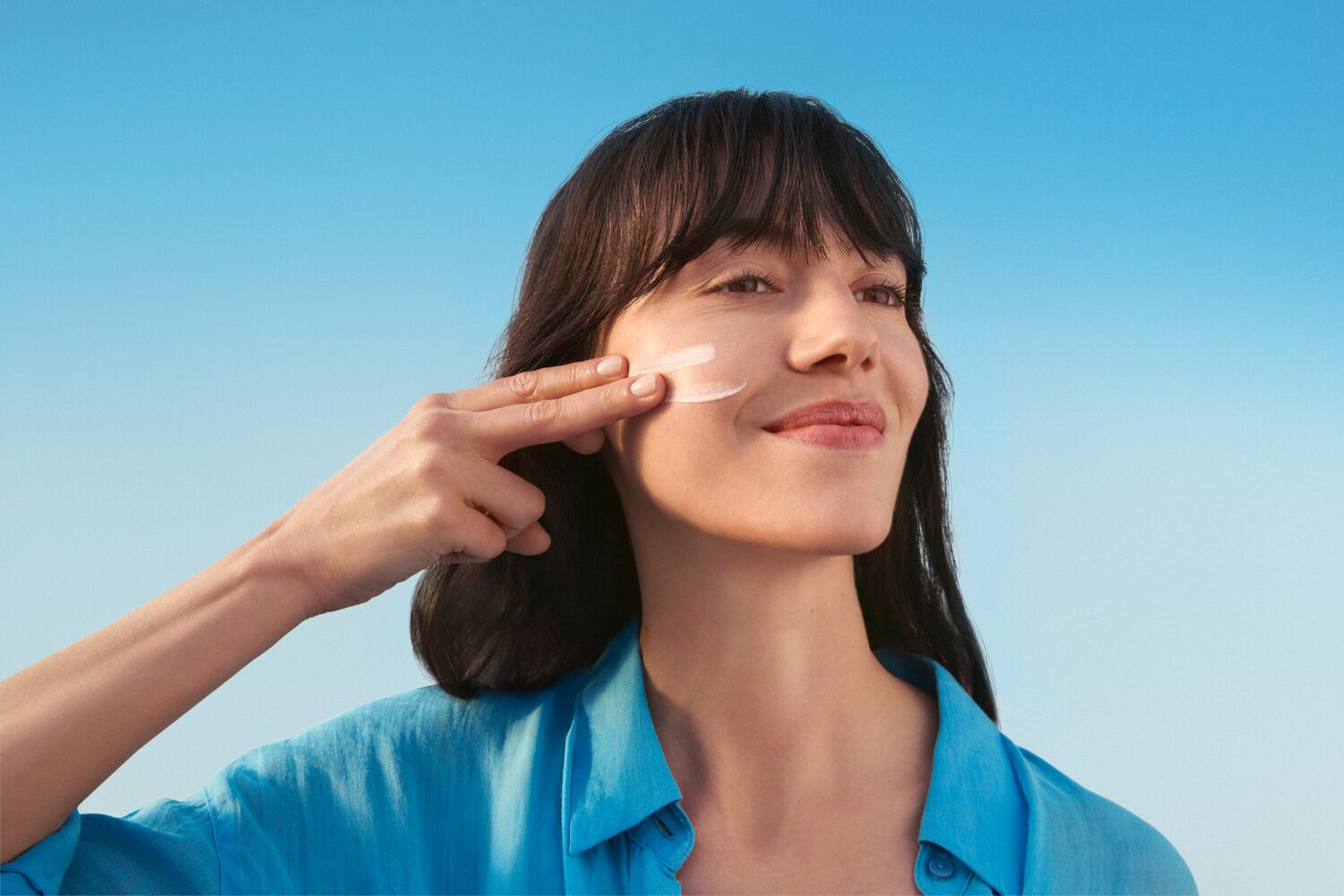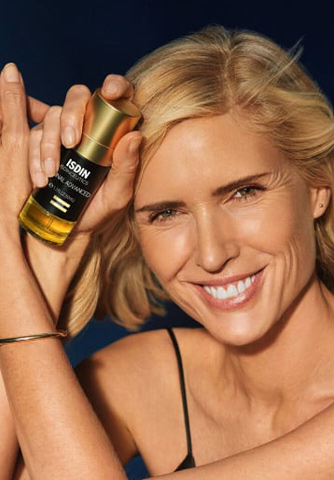You’ve probably heard that vitamin D is important for strong bones—but as it turns out, that’s just the beginning. From supporting your immune system to helping your muscles work properly, this all-star nutrient plays a big role in keeping your body feeling its best.
And since most of our vitamin D comes from sunlight, it’s easy to fall short—especially in winter or if you spend a lot of time indoors. In fact, it’s estimated that nearly 40% of adults in the U.S. don’t get enough vitamin D.
Luckily, your diet can help fill in the gaps. Let’s take a look at the top five foods with vitamin D, plus how they fit into a healthy routine that supports not just your bones—but your skin, too.
Table of Contents
5 great sources of vitamin D
Just how much vitamin D do you need? First, it’s measured in international units (IUs). And according to the U.S. FDA, adults and children over the age of four should aim for 800 IUs (or 20 micrograms) each day.
Here are five great ways to get there through food:
1. Fatty fish
Fatty fish are one of the best natural sources of vitamin D. Think salmon, sardines, trout, herring, and mackerel. These tasty options also offer bonus benefits like omega-3s, which are great for heart and skin health.
How much? A 3-ounce serving of wild-caught sockeye salmon packs about 447 IUs of vitamin D, which is roughly 56% of the recommended daily value.
Try this: Not big on fish? Try a cod liver oil supplement for a boost of both vitamins D and A.

2. Fortified foods
A lot of everyday foods are now fortified with vitamin D—meaning the vitamin is added in during processing. You’ll often find it in plant-based milks (like almond, soy, or oat), cow’s milk, orange juice, breakfast cereals, and oatmeal.
How much? Fortified orange juice can contain around 137 IUs per cup, which is about 17% of the recommended daily value—but it varies, so check the label.
Tip: Pairing fortified foods with a little healthy fat (like olive oil or avocado) may help your body absorb the vitamin more easily.

3. Egg yolks
Eggs are an easy, versatile way to get some vitamin D. Just remember—it’s the yolk, not the white, where the good stuff lives. So skip the egg-white-only scramble if you’re going for vitamin content.
How much? One large egg yolk contains around 41 IUs of vitamin D, or roughly 5% of the recommended daily value.
Try this: A veggie omelet with mushrooms (more on those below!) makes a delicious, vitamin D–rich start to the day.

4. Beef liver
Okay—we know this one isn’t for everyone. But beef liver is a surprisingly solid source of vitamin D, along with iron and other key nutrients. If the texture’s a turnoff, pâté can be a gentler way to give it a try.
How much? Three ounces of cooked beef liver gives you about 42 IUs, which is around 5% of the recommended daily value.
Tip: Liver is very nutrient-dense, so it’s best enjoyed occasionally, rather than every day.

5. UV-exposed mushrooms
Here’s a plant-based powerhouse: mushrooms exposed to ultraviolet (UV) light can naturally produce vitamin D—just like your skin does from the sun. However, not all mushrooms are grown this way, so it’s worth checking the label.
How much? A half-cup of UV-exposed mushrooms (like maitake or chanterelle) can offer up to 450 IUs, or approximately 56% of the recommended daily value.
Tip: Look for packages that say “UV-treated” or “vitamin D-enhanced” for maximum benefit.

What about vegans and vegetarians?
If you follow a plant-based diet, there are still plenty of options. Good vitamin D foods for vegans include:
- Fortified plant milks (soy, oat, almond)
- Fortified cereals
- Fortified orange juice
- UV-exposed mushrooms
Vegetarians can also add in egg yolks and fortified dairy products like yogurt or milk.
Tip: Always check the nutrition label to confirm the vitamin D content!
Does vitamin D help your skin?
Remember: your skin is like a mirror of your overall health—what you eat has a direct impact on how it looks and feels. The right nutrients help your skin stay hydrated and glowing while also strengthening it to take on everyday stressors like sun exposure and pollution—factors that make up the skin exposome.
Research suggests that vitamin D can support skin health in some interesting ways. Studies have shown that it may help regulate immune responses in the skin, support barrier function, and even reduce inflammation.
Overall, science highlights vitamin D’s role in keeping important skin processes functioning properly. While more studies are needed, it’s another good reason to keep your vitamin D levels in a healthy range.
An extra boost for healthy skin
Great skin starts with good habits—from daily sunscreen to mindful nutrition. That’s where SUNISDIN comes in, a daily supplement designed to support your skin from the inside out.
Formulated with VitAox ULTRA, a unique blend of vitamins (including D), antioxidants, and carotenoids, SUNISDIN helps boost skin elasticity and radiance. It’s a simple way to round out your routine—even better when paired with a balanced diet and healthy lifestyle.

The bottom line
Getting enough vitamin D doesn’t have to be complicated. From a sunny-side-up breakfast to a bowl of fortified oatmeal, small changes can make a big impact on your overall wellness—and possibly your skin, too.
And if you’re not sure whether you’re getting enough, talk to your healthcare provider. They can help you decide if a supplement is right for you.
Here’s to eating well, feeling great, and letting your skin glow from the inside out.
Sources and references:
- Lentjes, M. A. H., Welch, A. A., Luben, R. N., Khaw, K.-T., & Wareham, N. J. (2014). Cod liver oil supplement consumption and health: Cross-sectional results from the EPIC-Norfolk Cohort Study. Nutrients, 6(9), 4320–4337. https://doi.org/10.3390/nu6094320
- National Health Service (NHS). (n.d.). Vitamins and minerals: Vitamin D. https://www.nhs.uk/conditions/vitamins-and-minerals/vitamin-d/
- National Institutes of Health, Office of Dietary Supplements. (n.d.). Vitamin D – Health professional fact sheet. https://ods.od.nih.gov/factsheets/VitaminD-HealthProfessional/
- U.S. Food and Drug Administration. (n.d.). Code of Federal Regulations Title 21, Part 101 – Food labeling. https://www.accessdata.fda.gov/scripts/cdrh/cfdocs/cfcfr/CFRSearch.cfm?CFRPart=101&showFR=1&subpartNode=21:2.0.1.1.2.1
- U.S. Department of Health and Human Services & U.S. Department of Agriculture. (2015). Dietary Guidelines for Americans 2015–2020 (8th ed.), Appendix 12. https://health.gov/dietaryguidelines/2015/guidelines/appendix-12/
- Mushroom Council. (n.d.). Vitamin D and mushrooms. https://www.mushroomcouncil.com/vitamin-d/
- Parva, N. R., Tadepalli, S., Singh, P., Qian, A., Joshi, R., Kandala, H., & Nookala, V. K. (2018). Prevalence of vitamin D deficiency and associated risk factors in the US population (2011–2012). Cureus, 10(6), e2741. https://doi.org/10.7759/cureus.2741
Behind the blog:
Article written and reviewed by:
Amy is a content strategist who turned a part-time obsession with skincare into a full-time passion. Her experience as a creative storyteller includes a range of lifestyle and technology topics across Washington D.C. and Barcelona. What's in her travel bag? Eye contour cream and sunscreen, always.











